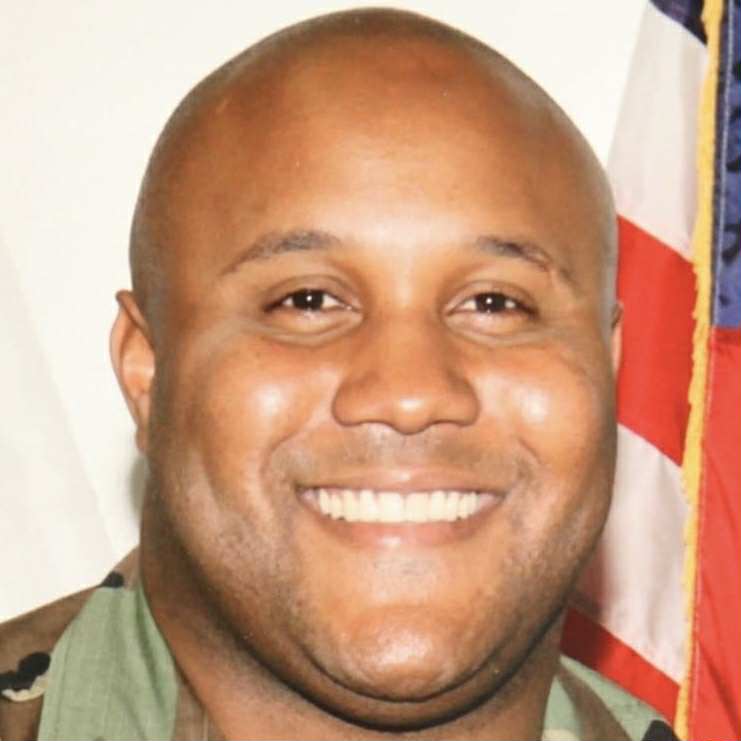
1979 - 2013
Christopher Jordan Dorner
Summary
Name:
Christopher Jordan DornerYears Active:
2013Birth:
June 04, 1979Status:
DeceasedClass:
Serial KillerVictims:
4Method:
ShootingDeath:
February 12, 2013Nationality:
USA
1979 - 2013
Christopher Jordan Dorner
Summary: Serial Killer
Name:
Christopher Jordan DornerStatus:
DeceasedVictims:
4Method:
ShootingNationality:
USABirth:
June 04, 1979Death:
February 12, 2013Years Active:
2013bio
Christopher Jordan Dorner was born on June 4, 1979, and grew up in Southern California. He attended Cypress High School and later Southern Utah University, where he played college football and earned a degree in political science with a minor in psychology. Dorner claimed to have endured repeated racial discrimination in his youth and eventually joined the La Palma Police Department’s youth training program, stating his desire to become a force for justice and change in law enforcement.
He enlisted in the United States Navy Reserve in 2002, where he rose to the rank of lieutenant and served in multiple security and coastal defense roles, including a deployment to Bahrain. His military service earned him commendations for marksmanship and discipline, and he was honorably discharged on February 1, 2013.
In 2005, Dorner entered the Los Angeles Police Department (LAPD) Academy. After returning from active duty in 2007, he resumed training under Officer Teresa Evans. That same year, Dorner accused Evans of using excessive force on a mentally ill suspect, Christopher Gettler. An internal review concluded that Dorner had fabricated the claim. He was terminated in 2008 for making false statements.
Over the next several years, Dorner attempted to overturn his dismissal, appealing through the California court system. His efforts failed. In 2011, the Court of Appeal upheld the LAPD’s decision, citing insufficient evidence to support Dorner’s allegations. According to witnesses, Dorner was distraught after the ruling, reportedly shouting, “I told the truth!”
In early 2013, Dorner authored an 11,000-word manifesto posted online, in which he declared “unconventional and asymmetric warfare” against the LAPD, alleging that his termination was retaliatory and racially motivated. He expressed contempt for the department’s internal corruption and laid out a kill list of specific officers and their families whom he held responsible for his downfall.
murder story
On February 1, 2013, Christopher Dorner sent a package containing a DVD and a bullet-riddled challenge coin to Anderson Cooper at CNN. This marked the beginning of a killing spree. On February 3, in Irvine, California, Dorner shot and killed Monica Quan and her fiancé Keith Lawrence. Quan was the daughter of a former LAPD captain who had represented Dorner during his dismissal from the police force.
Dorner's actions escalated quickly. On February 6, his manifesto was published online. It outlined his grievances against the LAPD and named specific targets, including Randal Quan's family. The following day, on February 7, Dorner shot at two LAPD officers who were responding to a tip about him, grazing one of them in the head. Shortly after, he ambushed two Riverside police officers at a stoplight, killing one and seriously injuring the other.
Dorner fled the area, and a massive manhunt ensued, spanning California and neighboring states. Authorities found his burned vehicle days later, around February 12. Dorner was tracked to a cabin near Big Bear Lake. That day, he was cornered by law enforcement. He opened fire on deputies, resulting in the death of one officer, Detective Jeremiah MacKay.
Law enforcement surrounded the cabin and attempted to communicate with Dorner. When he did not surrender, they used tear gas to force him out. Eventually, the cabin was set on fire due to the use of pyrotechnic tear gas canisters. Amid the chaos, a single gunshot was heard from within the cabin.
On February 13, officials confirmed that human remains were found in the cabin. The next day, an autopsy revealed that Dorner died from a self-inflicted gunshot wound to the head. His death concluded a violent series of events resulting from his grievances against the LAPD.